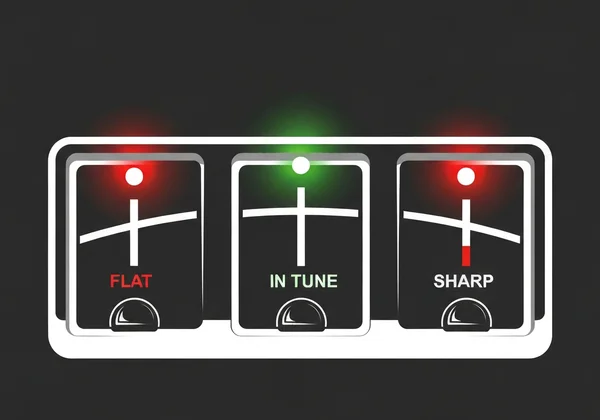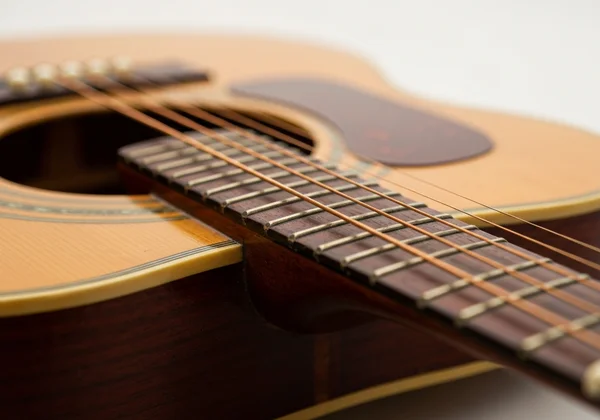Master Guitar Tuning with Our Free Online Tuner: Standard & Alternate Guide
Are you a guitar player struggling with pitch? Whether you're a beginner learning your first chords or an experienced musician exploring new sounds, perfect tuning is the foundation of great music. A poorly tuned guitar can make even the most skilled player sound off-key. The good news is that achieving flawless pitch has never been easier, thanks to the precision of a modern guitar tuner online. This comprehensive guide dives into everything you need to master guitar tuning, from using a free online tuner for standard EADGBE to diving into adventurous alternate tunings and maintaining your instrument for lasting accuracy. Let's get your guitar sounding its best!
How to Tune a Guitar Online Easily with Our Free Tuner
For many musicians, the days of relying on bulky electronic tuners or pitch pipes are over. The most convenient and accessible solution today is a high-quality online tuner. It requires no downloads, no payments, and works directly in your browser. This is especially useful for beginners who want a simple, visual guide, or for gigging musicians who need a quick tune-up on the go.
Getting Started: What You Need for Online Guitar Tuning
Getting started with an online tuner is incredibly simple. All you need is your guitar and a device with a built-in microphone, like a laptop, smartphone, or tablet. When you first visit an online tuner, your browser will ask for permission to access your microphone. Simply click "Allow" to enable the tool. Ensure you're in a relatively quiet environment so the microphone can clearly pick up the sound of your instrument without interference. That’s it—you're ready to tune.

Step-by-Step: Using Our Online Tuner for Standard EADGBE Tuning
Standard tuning is the starting point for almost every guitarist. The strings are tuned, from thickest to thinnest (6th to 1st), to the notes E, A, D, G, B, and E.
Here’s how to achieve it using the Tuner.wiki tool:
- Select Your Low E String (6th): Pluck the thickest string on your guitar. The tuner will display the note it detects.
- Adjust the Tuning Peg: Watch the indicator on the screen. If it shows the note is "flat" (too low), tighten the corresponding tuning peg slowly. If it's "sharp" (too high), loosen it.
- Aim for the Green Zone: Continue making small adjustments until the tuner’s needle is centered and the indicator turns green. This means the note is perfectly in tune.
- Repeat for All Strings: Move on to the remaining strings, following the same process for each note: A (5th), D (4th), G (3rd), B (2nd), and the high E (1st).
- Final Check: Once all strings are tuned, play each one again to ensure they have settled correctly.
Understanding Your Chromatic Tuner: Sharp, Flat, and In Tune Indicators
A chromatic tuner works by detecting the frequency of the sound wave produced by your string. It then compares this frequency to the closest standard musical note.
-
Flat (♭): If your note is "flat," its pitch is too low. The tuner will usually indicate this with a needle to the left of center or a red color. To fix this, you need to tighten the string to increase its tension and raise the pitch.
-
Sharp (♯): If your note is "sharp," its pitch is too high. The needle will be to the right of center, often also shown in red. To correct it, you need to loosen the string to decrease tension and lower the pitch.
-
In Tune: When the pitch is perfect, the needle will be dead center, and the display will typically turn green. This is your target for each string.

Explore Popular Alternate Guitar Tunings & How to Achieve Them
Once you’ve mastered standard tuning, a whole world of new sonic possibilities opens up with alternate tunings. These modified setups can make certain chords easier to play, create unique drones and resonances, and are signatures of genres from blues to metal. Using a flexible online instrument tuner is the perfect way to experiment.
Drop D Tuning: Power Chords & Heavy Riffs Explored
Drop D is often the first alternate tuning guitarists learn. It’s incredibly popular in rock, punk, and metal music. The only change from standard is that the low E string (6th) is tuned down a whole step to D.
- Tuning (from 6th to 1st string): D-A-D-G-B-E
- How to Achieve It: Simply pluck your 6th string and loosen the tuning peg until the online tuner shows a perfect D. The rest of the strings remain the same. This tuning makes playing power chords on the lowest three strings as easy as barring one finger.
Open G Tuning: Blues & Slide Guitar Basics
Open G is a favorite among blues and slide guitar players, famously used by artists like Keith Richards. In this tuning, strumming the open strings produces a G major chord.
- Tuning (from 6th to 1st string): D-G-D-G-B-D
- How to Achieve It: Tune your 6th (E to D), 5th (A to G), and 1st (E to D) strings down. Use your microphone tuner to hit each note precisely.
DADGAD Tuning: Celtic Sounds & Fingerstyle Rhythms
Pronounced "Dad-Gad," this tuning is famous in Celtic and folk fingerstyle guitar. It creates a beautiful, droning, and ambiguous sound that is neither major nor minor.
- Tuning (from 6th to 1st string): D-A-D-G-A-D
- How to Achieve It: Tune your 6th (E to D), 2nd (B to A), and 1st (E to D) strings down. The result is a wonderfully resonant canvas for melodic playing.
Experimenting with Other Open & Modal Tunings Using Your Chromatic Tuner
The tunings above are just the beginning. A good chromatic tuner can help you achieve any tuning imaginable. You can explore Open D, Open C, or even create your own. The key is to make changes slowly and let the tuner guide you, ensuring you don’t put too much tension on your strings.
Beyond the Tuner: Guitar Maintenance for Lasting Pitch Accuracy
Even a perfectly tuned guitar can sound wrong if the instrument itself isn't properly maintained. Keeping your guitar in tune is about more than just turning the pegs; it's about ensuring the entire system works harmoniously.
Why Intonation Matters: Fine-Tuning Your Fretboard
Have you ever tuned your open strings perfectly, only to find that chords played higher up the neck sound out of tune? This is likely an intonation problem. Intonation refers to the pitch accuracy of the notes across the entire fretboard. You can check it by comparing the pitch of a string's 12th-fret harmonic to the fretted note at the 12th fret. If they don't match, your guitar's bridge saddle may need adjustment—a task you can learn to do yourself or take to a professional guitar technician.
How to Change Guitar Strings for Optimal Tuning Stability
Old, worn-out strings are a primary cause of tuning problems. They lose their brightness and ability to hold pitch. Changing your strings regularly is crucial. When you do, make sure to stretch the new strings properly. After installing a new string, gently pull it up away from the fretboard a few times. This helps the string settle into place and will dramatically improve its ability to stay in tune.

Common Causes of Tuning Drift & Quick Fixes
If your guitar constantly goes out of tune, several factors could be at play:
- Slipping Tuning Pegs: Ensure the screws on your tuners are snug.
- Nut Issues: The string might be getting caught in the nut slot. A little graphite (from a pencil tip) can help it glide smoothly.
- Temperature and Humidity: Wood expands and contracts with environmental changes. Always let your guitar acclimate to a new room before a final tuning.
- Aggressive Playing: Heavy bending and strumming can pull strings out of tune. Re-tuning during a session is normal.
Start Playing in Perfect Harmony
You've now explored the world of accurate guitar tuning, from standard EADGBE to the creative depths of alternate tunings like Drop D and DADGAD. With a reliable online tool and basic maintenance, your instrument will always be ready to sound its best. Remember, an accurate, accessible, and free online chromatic tuner is a crucial accessory for any modern guitarist. Ready to elevate your sound? Visit Tuner.wiki today and experience our precise, easy-to-use online tuner.
Frequently Asked Questions About Guitar Tuning Online
Is an online guitar tuner accurate enough for professional use?
Absolutely. Modern online tuners, such as the one found on this site, use sophisticated algorithms to analyze sound frequencies captured by your device's microphone. Their accuracy is comparable to many professional physical tuners, making them reliable for practice, recording, and even live performances in a pinch.
What is the standard EADGBE tuning for a guitar?
Standard tuning refers to the notes each open string is tuned to, from the thickest (6th) to the thinnest (1st) string: E - A - D - G - B - E. This is the most common tuning used across virtually all genres of music.
How do I know if my guitar is sharp or flat with an online tuner?
The visual feedback on the tuner will tell you everything. If the indicator is to the left of the target note, the string is flat (too low), and you need to tighten it. If the indicator is to the right, the string is sharp (too high), and you should loosen it. You're in tune when the indicator is centered and turns green.
Can I use This Online Tuner to Tune My Acoustic and Electric Guitars?
Yes! A microphone-based online tuner works for any instrument that produces a clear pitch. It's perfect for both acoustic and unplugged electric guitars. Simply place your device's microphone near the sound source—the soundhole for an acoustic or the body of the electric—and pluck the strings.
What are the benefits of learning alternate tunings?
Learning alternate tunings can break you out of a creative rut. They can simplify complex-sounding chords, introduce unique harmonic possibilities, and inspire new song ideas. They are essential for playing in specific styles like slide blues, Celtic folk, or modern metal. Using the Tuner.wiki free tool makes experimenting with them easy and fun.